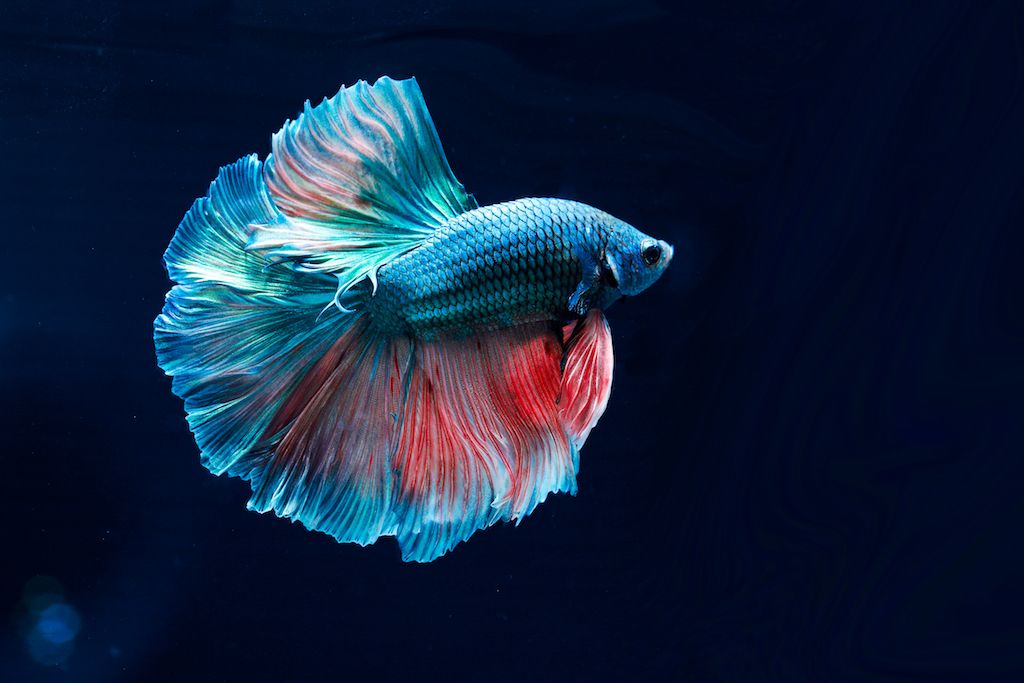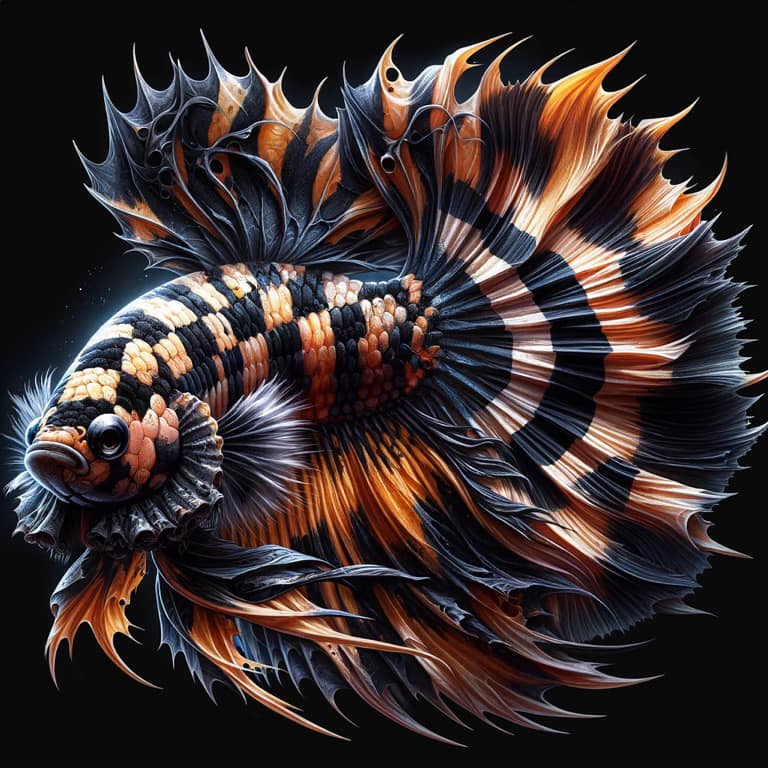Everything About Betta Fish: Understanding Their Distinct Requirements, Habits, and the very best Practices for Ideal Treatment
Recognizing the special demands and behaviors of Betta fish is vital for any kind of aquarist looking to supply ideal care. These fascinating animals, belonging to the cozy waters of Southeast Asia, display unique territorial tendencies and call for particular environmental problems to thrive. From choosing the right tank dimension to recognizing potential wellness issues, various variables dramatically affect their wellness. As we check out these components better, the effects for both newbie and knowledgeable fish caretakers become increasingly noticeable, questioning concerning just how finest to accommodate these exceptional fish in our homes.
Betta Fish Overview
Although commonly appreciated for their vivid colors and streaming fins, Betta fish, scientifically referred to as Betta splendens, are intricate animals that need particular like flourish. Stemming from Southeast Asia, these freshwater fish are understood for their territorial nature and one-of-a-kind actions. Betta fish exhibit sex-related dimorphism, with males presenting extra dazzling colors and longer fins than women.
Their hostile propensities, especially amongst males, necessitate mindful consideration when real estate them. Bettas are commonly maintained in single-specimen containers to stop territorial conflicts. However, they can exist together quietly with specific suitable varieties in larger community containers, supplied the atmosphere meets their requirements.

To ensure optimal treatment, aquarists need to understand their special behavioral qualities, dietary requirements, and environment demands. betta fish. With proper focus, Betta fish can display their lively personalities and prosper in a well-maintained aquarium setup
Natural Habitat and Environment
Betta fish flourish in a varied array of natural environments, mainly discovered in the shallow waters of Southeast Asia, including rice paddies, swamps, and slow-moving streams. These atmospheres are identified by warm temperature levels, usually between 75 ° F and 82 ° F(24 ° C and 28 ° C ), and a pH degree ranging from 6.5 to 7.5, which is optimal for their health and wellness and well-being.
In their natural environments, Betta fish are accustomed to thick vegetation, giving both shelter and reproducing premises. The presence of plants such as floating water lilies and thick turfs not just provides protection from predators but additionally contributes to the oxygenation of the water, which is vital for their respiratory system demands. Furthermore, these atmospheres frequently have areas of still water, allowing Betta fish to display their all-natural actions such as bubble nesting.
Recognizing the natural habitat of Betta fish is critical for aquarium fanatics. Reproducing these conditions-- through water temperature level, pH equilibrium, and the incorporation of real-time plants-- can dramatically boost the general health and wellness and long life of these fascinating fish, guaranteeing they grow in a home fish tank setting.
Social Behavior and Interactions
Comprehending the social behavior and communications of Betta fish is essential for effective fish tank monitoring. Betta fish, or Siamese battling fish, are known for their unique behavior qualities, characterized mainly by territoriality and aggression. Men, in certain, display extremely aggressive habits towards one another, leading to the well-known reputation of Betta fish as fighters. In a constrained area, 2 men can participate in violent battles, often resulting in injury or death.
Alternatively, women Bettas exhibit much less hostile habits and can exist side-by-side in teams, called sororities, if presented properly. Nonetheless, it is critical to check their communications closely, as power structure and dominance can bring about problems. Recognizing the characteristics within a Betta community is vital; developing hiding spots and making certain enough space can minimize aggressiveness.
Furthermore, Betta fish might also display curiosity and social actions in the direction of other varieties. While they can exist side-by-side with specific non-aggressive container mates, it is vital to select suitable species to prevent tension and aggression. On the whole, acknowledging these social interactions is essential to fostering an unified fish tank atmosphere for Betta fish.
Essential Care Guidelines
Providing correct care for Betta fish is vital to their wellness and wellness. To ensure a thriving environment, it is important to preserve ideal water problems. The water temperature level ought to be maintained between 76 ° F and 82 ° F(24 ° C to 28 ° C), while pH degrees must vary from 6.5 to 7.5. Routine water modifications-- see this roughly 25% regular-- aid keep water top quality.
Betta fish require a suitable tank size; a minimum of 5 gallons is suggested to offer sufficient space for swimming and hiding. Consist of designs and plants to develop a stimulating setting, but avoid sharp things that might damage their fragile fins.

Last but not least, make sure the container is outfitted with a filter to maintain the water clean, but use a gentle filter to stay clear of solid currents that can emphasize the fish. By complying with these vital care guidelines, owners can promote a healthy and balanced and lively Betta fish.
Common Health And Wellness Issues and Solutions
In the care of Betta fish, recognition of common wellness issues is vital for keeping their well-being. One widespread problem is fin rot, frequently triggered by bad water high quality or bacterial infection. Signs and symptoms consist of frayed or stained fins. To deal with fin rot, enhance water problems and take into consideration utilizing a broad-spectrum antibiotic.
One more usual condition is ich, a parasitic infection defined by white areas on the fish's body (betta fish). Treatment involves boosting water temperature and adding aquarium salt to the storage tank, as this can help remove the bloodsucker
Swim bladder problem is likewise often observed, leading to buoyancy issues. This condition may arise from overfeeding or bowel irregularity. A fasting period of 24-48 hours, complied with by a discover here diet plan of blanched peas, can supply relief.
Lastly, bettas might struggle with velour disease, indicated by a gold dust-like appearance on their skin. Therapy usually calls for medication specifically created for external parasites, alongside boosted tank hygiene.
Regular monitoring of water parameters, maintaining a clean atmosphere, and providing a well balanced diet regimen are critical precautionary procedures. By resolving these wellness concerns immediately, Betta fish can lead much healthier, a lot more dynamic lives.
Conclusion
In summary, successful betta fish treatment requires an understanding of their special demands and habits. Giving an ideal atmosphere, including appropriate tank size and water conditions, is crucial for their wellness. Furthermore, acknowledging their territorial nature and making certain ample hiding places can prevent aggression. Routine monitoring of health and wellness and water high quality, along with a balanced diet regimen, contributes to the longevity and vibrancy of betta fish. Following these standards will certainly cultivate a thriving aquatic ecological community for these captivating creatures.